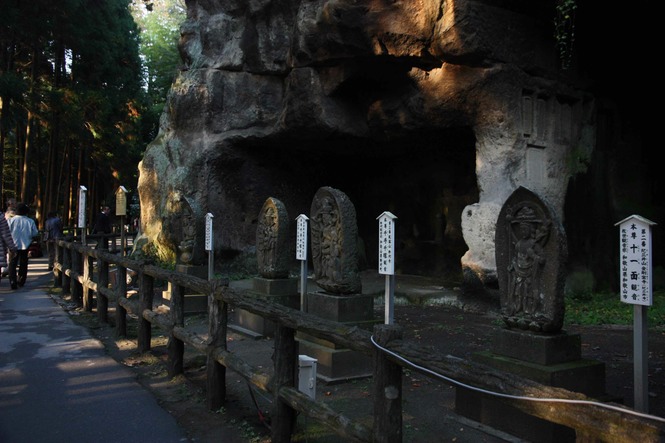
More impressive, although we didn't have time for a more exhaustive look is the nearby Zuiganji Temple, currently undergoing renovations. It'll stay that way until 2018 and although the grounds are open, the main hall will be closed until March 2016 though if you're visiting in the meantime they've opened during alternate buildings which aren't usually open to the public.
It would be natural to suspect the renovations are related in some way to the 9.0 magnitude earthquake and resulting tsunami on 11 March 2011, but Matsushima escaped major damage thanks to its location inside the island dotted bay since the islands blunted the impact of the waves. Most tourist attractions, shops and hotels reopened within a few weeks or months of the earthquake but there was some structural damage and though the JR Senseki Line is open for business, after Matsushima Kaigan you can only go one stop further, so if you’re looking to get to Matsushima by train, you’re going to have to head through Sendai.
Originally founded in 828 by the Tendai Sect, Zuiganji became a Zen temple during the Kamakura Period (1192-1333) and was restored, after years of decline, by the same feudal lord (Date Masamune) who restored Godaido as his family temple in 1609 and today it's one of the region's most prominent Zen temples, known for its gilded and painted sliding doors (fusuma) which we didn't get to see, but there's every chance we'll be back some time.
As you enter the grounds, there’s a straight path flanked by cedar trees leading to the Main Hall, the Kuri (the Zen kitchen where meals were prepared in the past) and the Seiryuden, also known as Zuiganji Art Museum displaying some of the temple's treasures and artifacts of the Date Clan, but as you head inside there’s an interesting path that veers off to the right of the main avenue that takes you to a number of caves that were used in the past for meditation, and today contain moss-covered Kannon statues. More...
